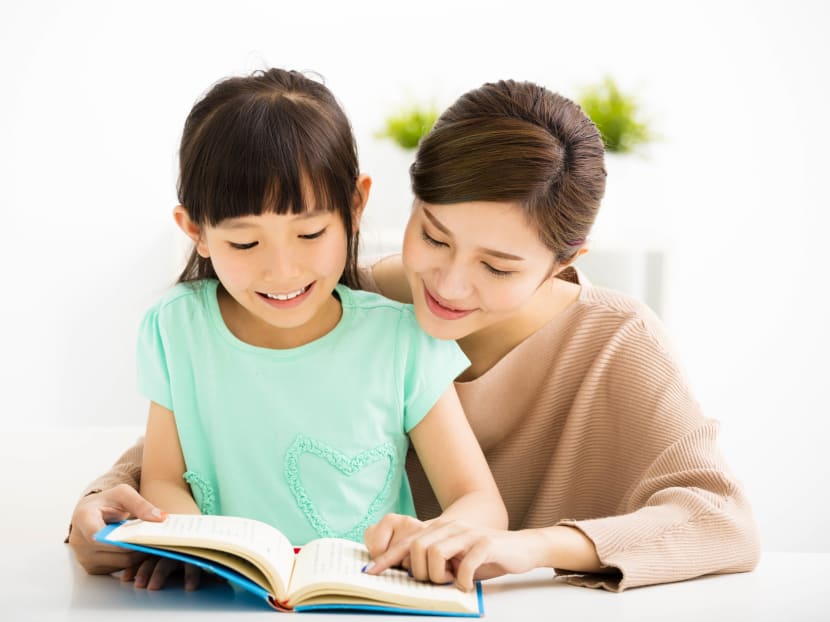What ‘brand’ of Mandarin will you teach your kids: Diana Ser
SINGAPORE — I raised an eyebrow the very first time my daughter, then 3, said “mian tiao” (noodles).

iStock file photo
SINGAPORE — I raised an eyebrow the very first time my daughter, then 3, said “mian tiao” (noodles).
I was surprised — yet again — by how fast and well kids learn. Number Three had been in the company of a lady from Beijing who played with her and taught her the term. Hence, “mian tiao” (noodles) and “bai mi fan” (white rice) form part of her lexicon.
See, in true Singaporean form, we have abbreviated that term “mian tiao”, used in China, to just “mian”, or “mee” (as influenced by the Malay word).
I could not help wondering: What “brand” of Mandarin is being used in our kindergartens and schools? And what about in Chinese learning centres that promise “authentic” accents and teachers who are “native speakers”?
With so many teachers who hail from China these days, will our kids speak a different version of Mandarin from us? And for all the hard work and chest-beating over Mandarin, will they even be understood beyond Singapore?
In Shanghai to film a TV programme around 15 years ago, I was chatting with our local translator when I uttered the term “huang li” – pineapple. She drew a blank, and when she finally understood what I meant, she threw her head back and laughed. She informed me that the “right” term for pineapple was feng li, not huang li.
Bilingual? Perhaps in Singapore. But in Shanghai, my bilingualism came with a big caveat.
In a world where China’s economy is second only to the United States’, being able to speak Mandarin may mean knowledge of a brand of Mandarin that China understands.
This explains why millions of people, from Russia to Cambodia, are studying Mandarin even though it is one of the most difficult languages in the world.
From 2000 to 2004, the number of students in England, Wales and Northern Ireland doing A’ Level exams in Chinese climbed by 57 per cent.
Singapore Mandarin differs from the Mandarin used in different parts of the world as a result of unique historical, cultural and social circumstances. Our Mandarin has influences from dialects, as well as borrowed terms from English and Malay. In fact, some further differentiate “standard” Singapore Mandarin from its colloquial cousin.
The latter is what I term affectionately as “market Mandarin” — a rojak of Mandarin, English and Malay words, sometimes all in one breath.
Standard Singapore Mandarin is what I would hear from newscasters (if they happen to be Singaporean) and what I see in my children’s Chinese textbooks.
So, will you teach your kids Singapore Mandarin or Putonghua (the standard form of modern Mandarin), I asked a few friends.
“Still can choose? I’d be happy if they even want to speak any Mandarin at all,” said one mum.
Another mother said putonghua with clear pronunciation and good vocabulary is preferable.
“Having that ‘brand’ of Mandarin helps people understand him better on the world stage,” she said.
Another mum told me: “Singapore mandarin spoken outside of the classroom is peppered with lah, meh, hor... just like Singapore English. We use phrases that are unique to Singapore .. overseas Chinese wouldn’t understand.”
In a study published in the journal Chinese Language and Discourse, researchers from Nanyang Technological University and the University of Birmingham surveyed 100 Singapore youths aged 17 to 25.
They wanted to know these youths’ attitudes towards accents of three different forms of spoken Mandarin — Beijing, Taiwan and Singapore.
Beijing Mandarin won hands down. It was perceived as the most desirable and prestigious on dimensions such as education, wealth, leadership, trustworthiness and sincerity.
Whether we like it or not, Singapore Mandarin may be increasingly influenced by Putonghua as China continues its economic march and grows its soft power.
As a parent who embraces bilingualism, reconciling local and global needs is my challenge. And in making decisions for my kids’ learning, I need only to be accountable to one person: The young man or woman that my child will be 20 years down the road.
I have decided that as a foundation, my kids must learn Mandarin as it should be spoken — with accurate pronunciation and standard grammar. This way, they should have no problems communicating with Mandarin speakers anywhere in the world.
The accent, frankly, is the least of my concerns.
Often, when I converse with mainland Chinese, I am asked if I am from Taiwan. And when I speak to Taiwanese folks, they ask politely if I hail from the mainland. I figured that places my accent right smack in ... Singapore?
So here is my guiding principle in nurturing my kids’ bilingualism: Standard Mandarin for survival — yes, the economic impetus is ever pressing. And a more Singaporean version for solidarity.
My kids will spend their formative years here in Singapore, so I am confident they will learn their fair share of Singapore Mandarin, particularly the colloquial kind. And I am happy for that.
“Mian tiao” or mee pok, they can have their mee — and eat it, too.
Diana Ser is a TV host who currently runs online portal Crazy About Chinese that encourages parents to teach their children the Chinese language through daily activities. She is married to actor-turned-bank executive James Lye and they have three children aged between five and 10.





